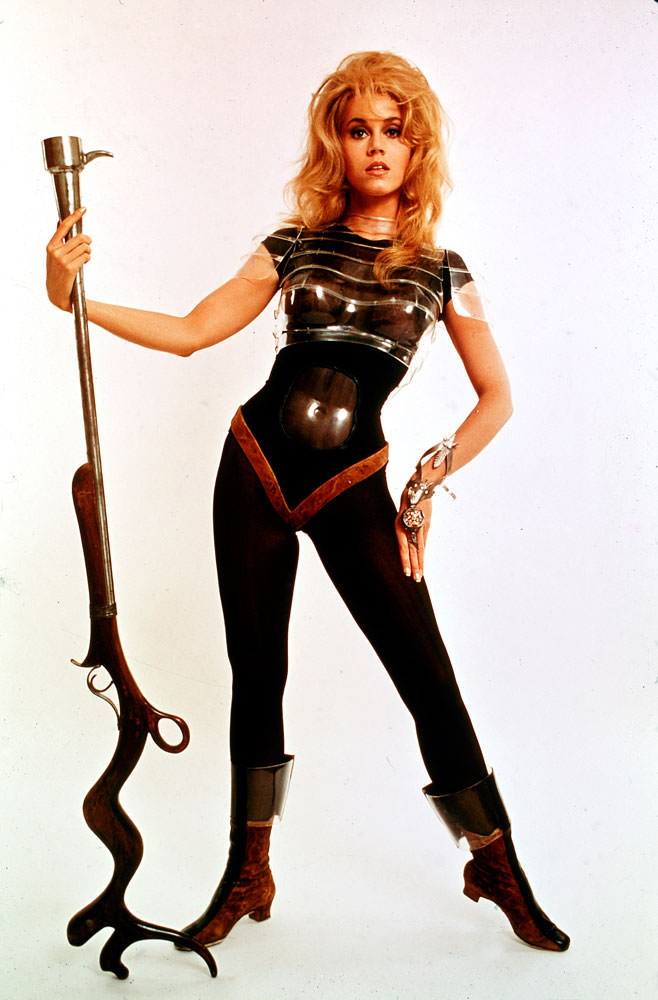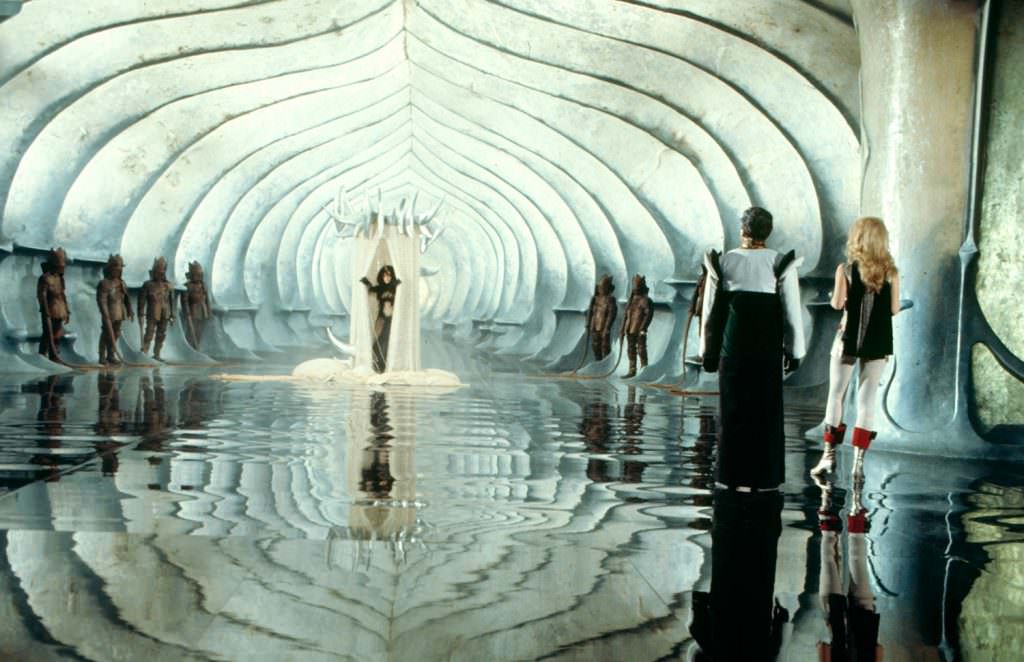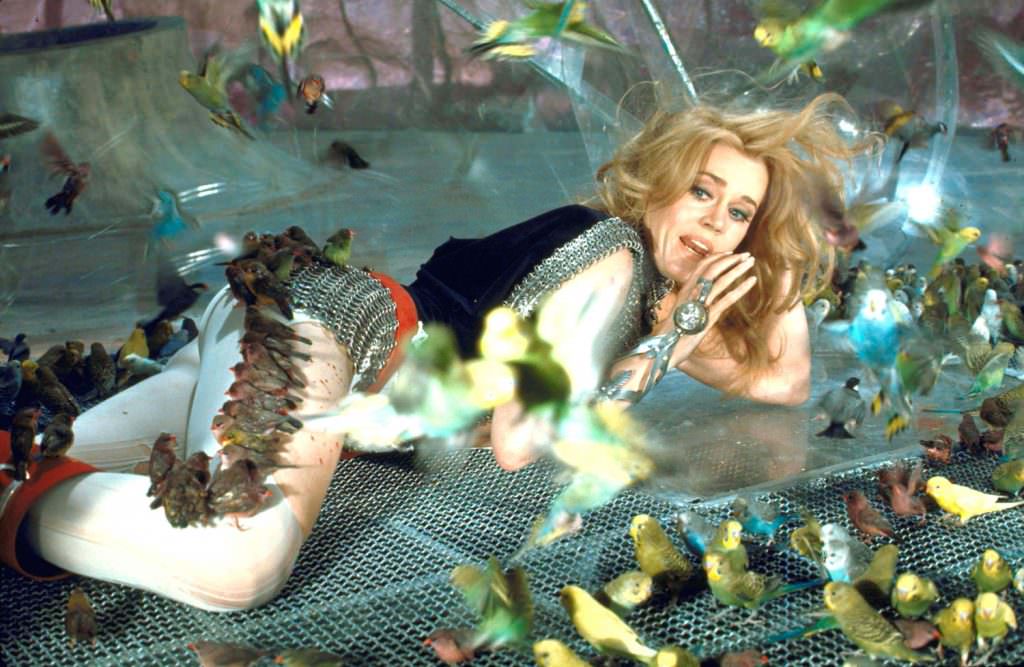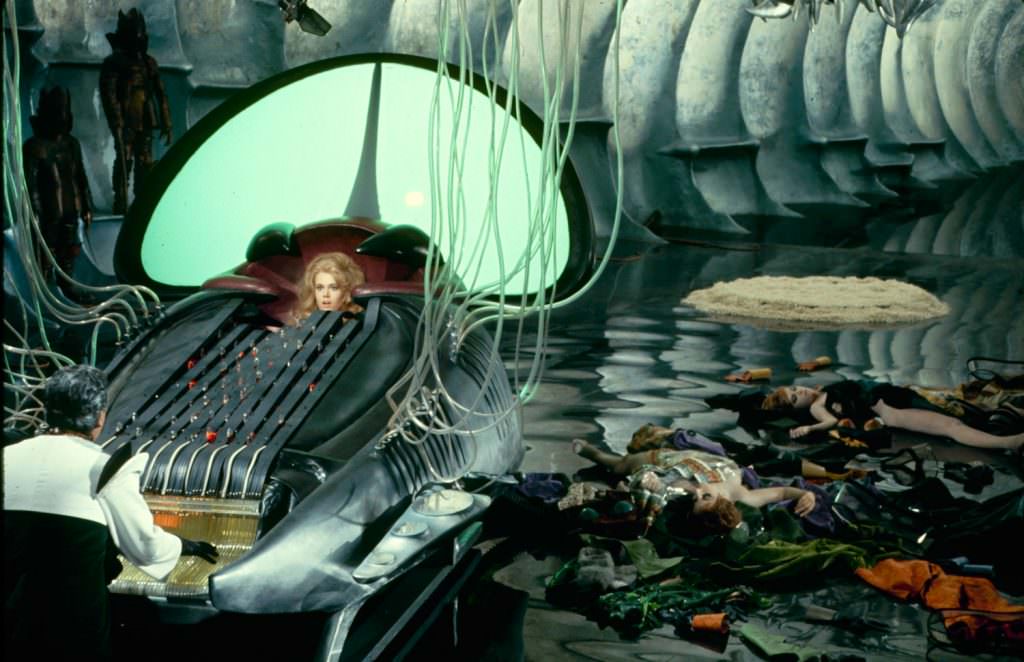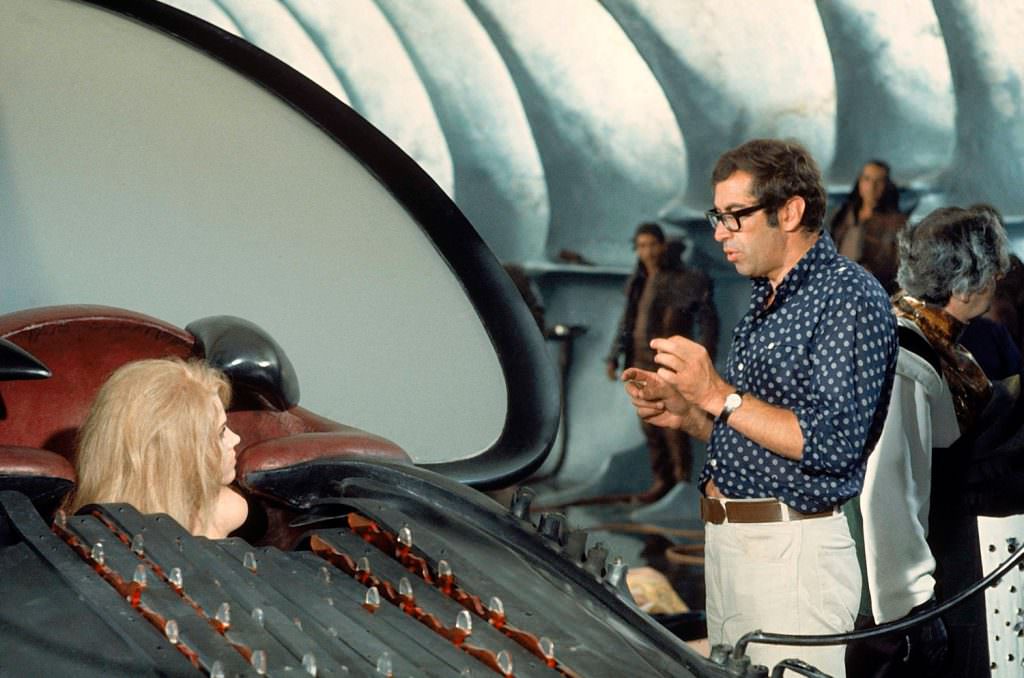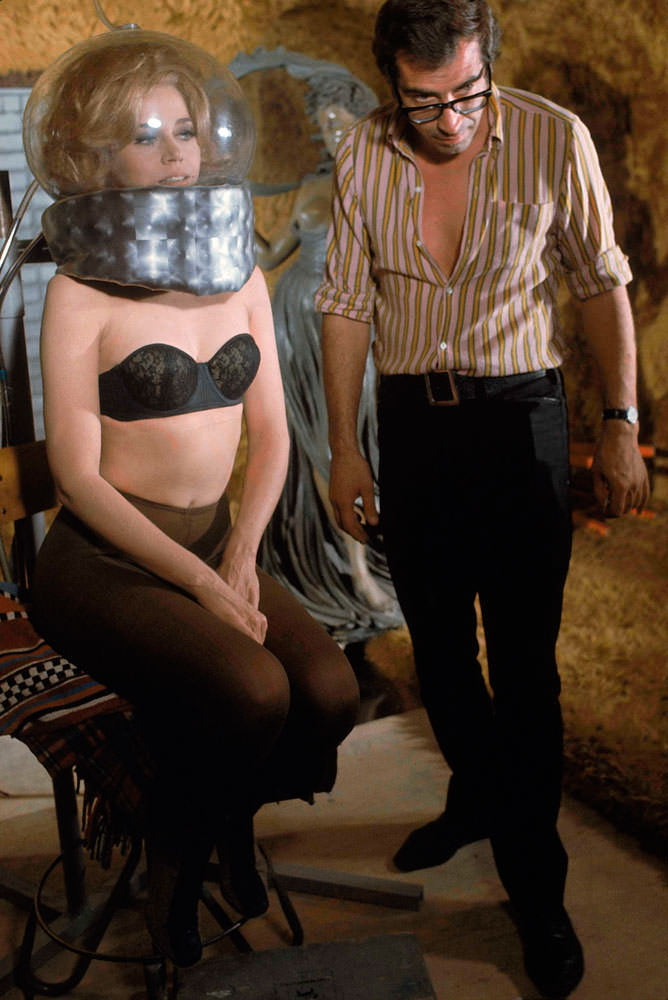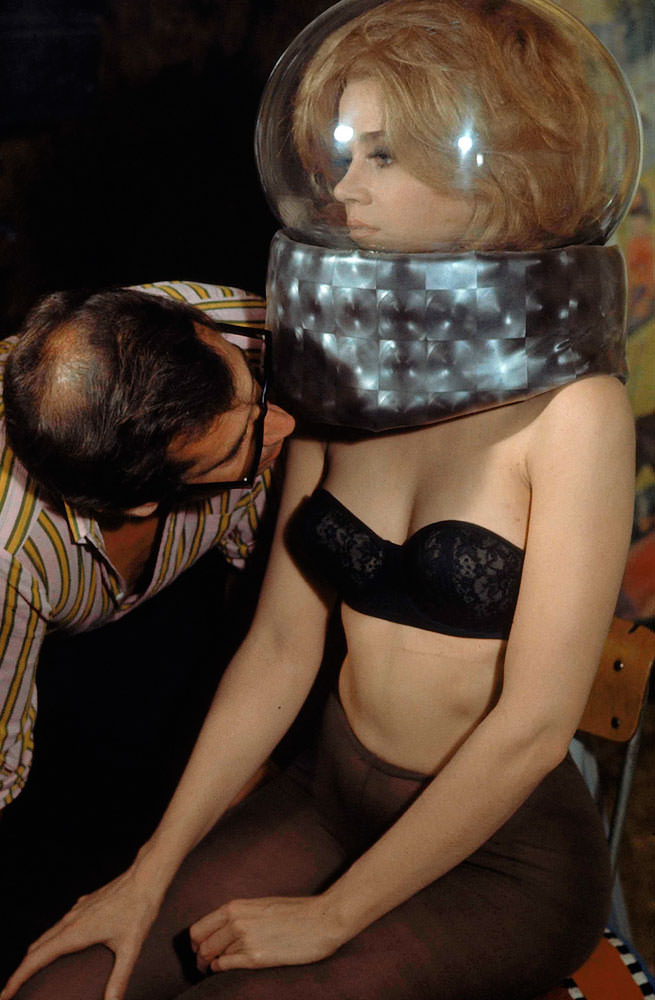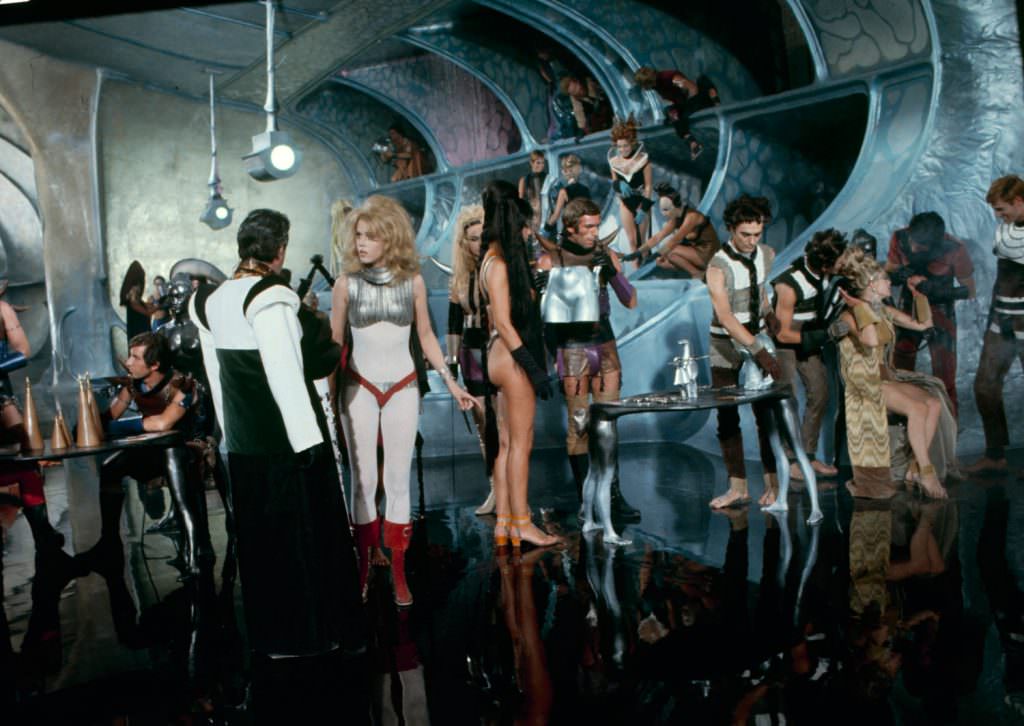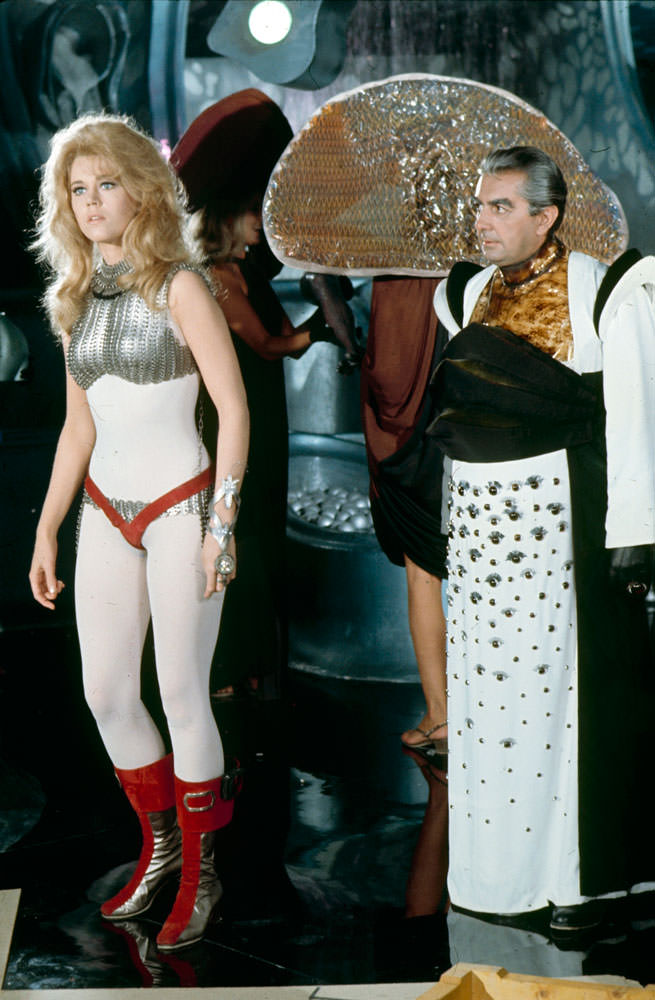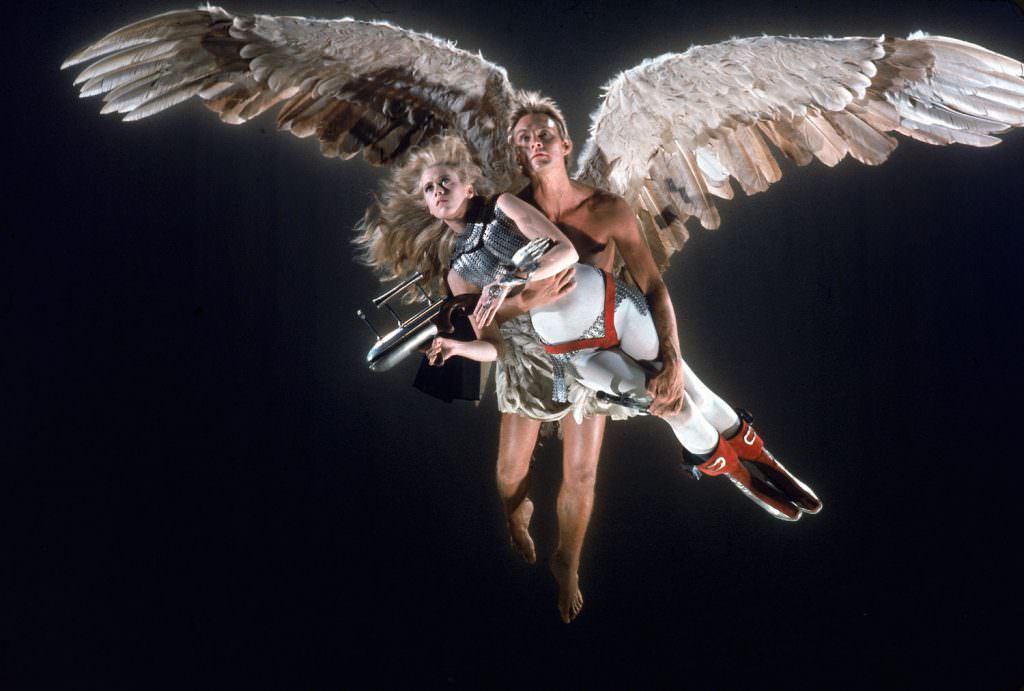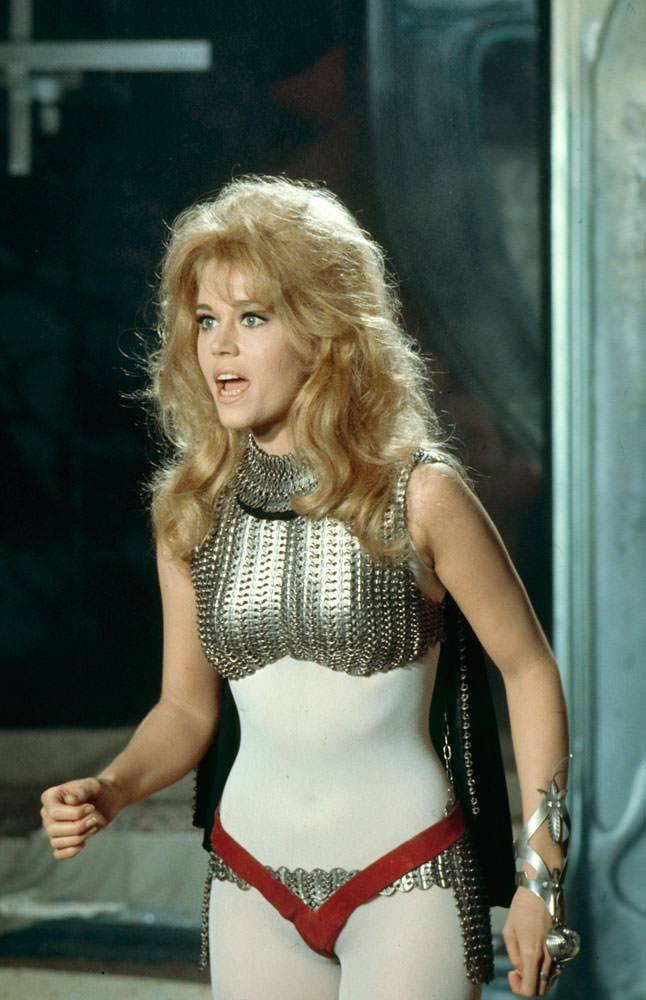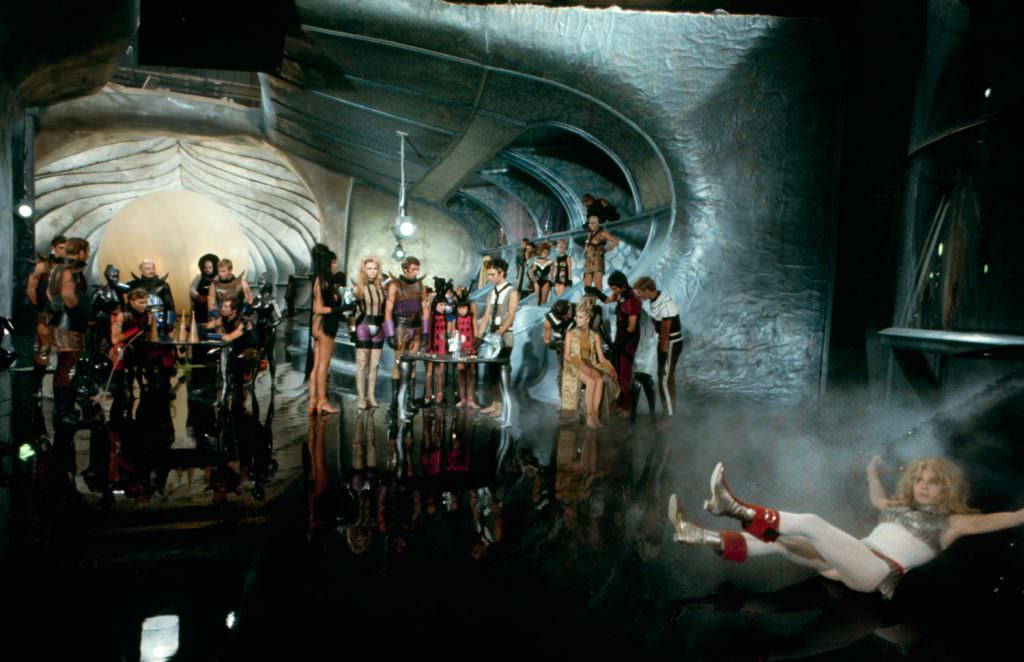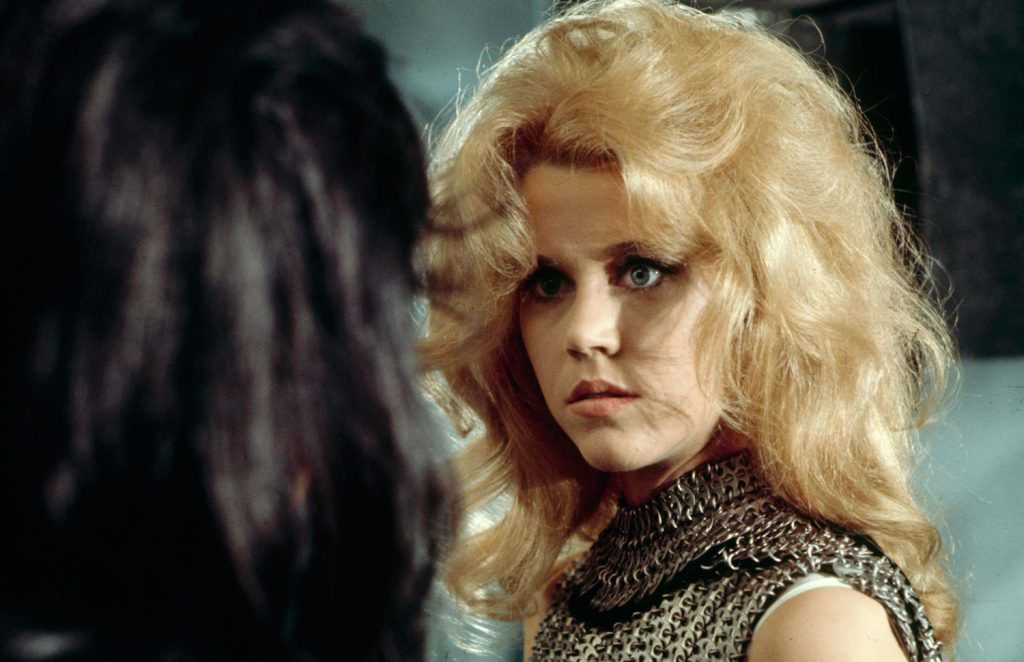Barbarella is based on a French comic book series of the same name. It was created by Jean-Claude Forest. Dino De Laurentiis, a famous Italian film producer, had the idea to make the comic into a movie. He was known for producing many different types of films, including several “spaghetti Westerns.”
De Laurentiis hired Roger Vadim to direct the movie. Vadim was a French director who was well-known for his visually striking films. He was also Jane Fonda’s husband at the time.
Finding the perfect actress to play Barbarella was crucial. Several famous actresses were considered, including Sophia Loren and Brigitte Bardot, but they all turned it down. Ultimately, Jane Fonda took on the iconic role. Fonda was not too sure about the film at first, but Vadim convinced her.
Building a Futuristic World
Barbarella is set in a distant future, on the planet Lythion. The filmmakers had to create a whole new world, filled with strange creatures and futuristic technology. This was a big job, especially in the 1960s, before the time of computer-generated effects.
Read more
The sets were built at Cinecittà Studios in Rome, Italy. This studio was famous for its large sound stages and skilled craftspeople. They built many elaborate sets to represent different parts of Lythion.
One of the most memorable sets is the Black Queen’s castle. It was designed to look dark and menacing, with strange shapes and shadows. Other sets include the Matmos, a bubbling lake of energy, and the Labyrinth, a maze filled with traps.
The art director, Mario Garbuglia, played a huge role in creating the look of the movie. He worked closely with Vadim to bring the director’s vision to life. They used bright colors and unusual designs to make the world of Barbarella feel truly alien.
Costume design was also a vital part of the movie. Jacques Fonteray created many of Barbarella’s costumes. He used shiny fabrics and daring designs. Paco Rabanne, a fashion designer known for his futuristic styles, also helped design some of the outfits. Barbarella’s costumes are one of the things people remember most about the film.
Lights, Camera, Action!
Filming Barbarella wasn’t always easy. The actors had to work with complex sets and costumes. Some of the special effects were tricky to achieve.
For the flying scenes, Jane Fonda was often suspended by wires. This was a common technique at the time. She spent hours hanging in the air, pretending to fly through space. It was tiring and sometimes uncomfortable, but it created a believable illusion on screen.
In one scene, Barbarella is attacked by sharp-toothed dolls. These dolls were puppets, controlled by people behind the scenes. The filmmakers used a mix of real puppets and clever camera angles to make the dolls appear alive.
Another scene involves the Excessive Machine, a device that kills people with pleasure. Milo O’Shea played the inventor of this strange machine. The scene was meant to be both funny and a little bit scary. It required careful timing and special effects to make it work.
The Matmos scenes were especially challenging. The Matmos is a living lake that responds to emotions. To create this effect, the filmmakers used a giant tank filled with a mixture of different liquids. They had to experiment with various substances to get the right look and movement.
Creating a Unique Soundtrack
The music in Barbarella is just as unique as the visuals. Bob Crewe and Charles Fox composed the score. They are known for their work on many popular songs of the 1960s.
The music combines different styles, including pop, rock, and orchestral sounds. It helps to set the mood for each scene, from the exciting opening credits to the more dramatic moments.
The opening title sequence is especially noteworthy. It features Jane Fonda as Barbarella, seemingly floating in zero gravity. The sequence is set to the movie’s theme song, also called “Barbarella.” It’s a catchy tune that captures the fun, playful spirit of the film.
The Challenges of Filming
Shooting a movie like Barbarella was no walk in the park. The cast and crew faced numerous challenges throughout the production. The special effects were particularly difficult to achieve. Remember, this was before the age of computer graphics. Everything had to be done practically, using physical objects and clever camera tricks.
One of the biggest challenges was making Barbarella fly. Jane Fonda spent countless hours hanging from wires. It was a physically demanding task. The wires were often uncomfortable, and she had to maintain specific poses while suspended in the air. The crew worked hard to make sure she was safe and as comfortable as possible, but it was still a tough job.
The scenes with the Matmos, the living lake, also posed unique problems. The crew had to figure out how to make the lake look like it was responding to emotions. They experimented with different mixtures of liquids, trying to find the perfect combination that would move and bubble in the right way. They also had to control the lighting carefully to create the desired effect.
Another tricky scene involved the dolls with sharp teeth. The crew used a combination of puppets and camera angles to make the dolls seem to attack Barbarella. The puppets had to be carefully designed and operated to look realistic. The actors had to react to the puppets as if they were real, which required a lot of skill and practice.
Even the costumes presented challenges. Many of Barbarella’s outfits were made from unusual materials. They were often tight and restrictive, making it difficult for Jane Fonda to move freely. She had to learn how to move and act while wearing these elaborate costumes, which wasn’t always easy.


